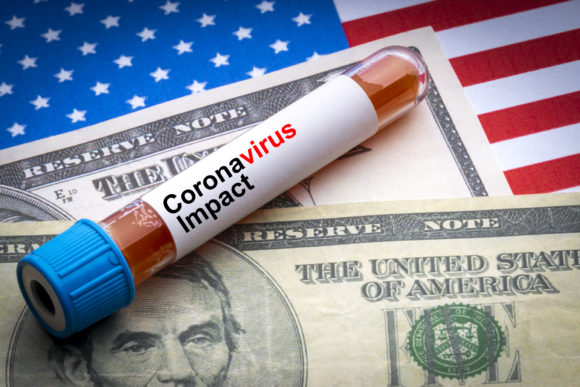Chubb unveiled a proposal for the insurance industry and federal government to partner on covering future pandemic-related business interruptions—and to get money to small businesses quickly—following through on an earlier promise from CEO Evan Greenberg.
Documents shared with Carrier Management and available on Chubb’s website describe a program that recognizes the need to treat small and large businesses differently. One part of the program offers affordable coverage and almost immediate infusions of predetermined sums of cash for the smallest businesses. The other part establishes a voluntary indemnity-based program for larger businesses that can better afford risk-appropriate premiums and may be able to operate during pandemics (accessing credit lines or relying on captive insurance programs).
The Chubb proposal closely resembles a Pandemic Reinsurance Corp. proposal described by Reinsurance Association of America President Franklin Nutter during a reinsurance seminar in June. In fact, a newly created government-run reinsurance entity for covering some of the losses for medium and large business—those with more than 500 employees—is called “Pandemic Re” under the Chubb proposal.
For smaller businesses, a “Business Expense Insurance Program” (BIP) would kick in in the event of a government-declared pandemic (U.S. Centers for Disease Control and Prevention medical criteria; Declaration of Emergency by U.S. Department of Health and Human Services or the president) and ensuing lockdown, with no need for insurers to adjudicate individual claims. Instead, insurers would dole out multiples of payroll to participating small businesses for up to three months (after a 14-day waiting period), drawing down from a line-of-credit facility set up by the U.S. Treasury for amounts that exceed industry share of BIP losses.
The parametric structure of the BIP resembles a similar proposal for a Business Continuity Protection Program (BCPP) unveiled by the American Property Casualty Insurance Association, the National Association of Mutual Insurance Companies and the Independent Insurance Agents & Brokers of America in May. But the BCPP does not distinguish between small and large businesses, and the revenue replacement assistance under that plan would come from FEMA.
Importantly, like earlier proposals including the BCPP and the Pandemic Risk Insurance Act, a bill sponsored by Rep. Carolyn Maloney, D-N.Y. (H.R. 7011), which would have the industry taking a risk-bearing role with a federal reinsurance backstop (again with no small or large business distinctions), the Chubb proposal would not be available for COVID-19 business interruptions. COVID-19 is excluded from the triggers for the BIP and Pandemic Re payouts with a proposed inception date of Jan. 1, 2021.
The concept of having separate programs for small and large businesses and the overarching idea of the government taking on the lion’s share of the risk while insurers facilitate the payouts line up well with some of the views that Greenberg expressed during an April earnings conference call when he disclosed that Chubb was working on a public-private partnership concept.
“The industry has a finite balance sheet that can’t take infinite risk. If the government would take the tail risk and take the significant loss in a pandemic event, the industry, I believe, could take a retention and could be underwriting pandemic,” he said.
 During the same conference call, Greenberg also noted the complicated process involved in adjusting business income insurance claims that involves proving the loss and the amounts of expenses and lost revenue for each insured. “It is time-consuming and it’s one at a time. And what matters right now is cash flow to small businesses,” he said.
During the same conference call, Greenberg also noted the complicated process involved in adjusting business income insurance claims that involves proving the loss and the amounts of expenses and lost revenue for each insured. “It is time-consuming and it’s one at a time. And what matters right now is cash flow to small businesses,” he said.
As described in the documents published yesterday, the BIP coverage for small businesses would also be affordable because they would only pay risk-appropriate premiums for the insurers’ share of assumed risks. There would be no premium for the government share.
The overall capacity for the small business program is $750 billion, of which the industry would pay 6% of claims up to $15 billion in the first year of the program, with the government taking on the rest (up to $735 billion).
All carriers writing business insurance must offer the BIP program, and in the event that the program is triggered, each carrier would pay 6% of first-dollar claims up to its market share of the $15 billion limit. The $15 billion will increase to $30 billion over the course of 20 years.
Another feature of the BIP is described as a “strong opt out.” This means that although businesses can decline pandemic coverage on workers compensation or business owners policies, if they decline the coverage they will not be eligible for any other government relief. They must acknowledge that they understand this.
The overall objective of BIP is to keep people employed and minimize economic disruption, Chubb says.
The Pandemic Re portion of the program for larger businesses also has a broad objective: to create a market-oriented program for larger businesses “intended to support and stimulate the private market for pandemic coverage.”
Under this portion of the plan, both the insurance industry and the government would be paid risk-appropriate prices for pandemic cover, and policies “written on modified standard industry forms” would each cover business expenses of up to $50 million (after a 30-day waiting period).
The overall limit for this portion of the program is set at $400 billion, with the industry taking $15 billion and the government $385 billion. As is the case with the BIP portion of the plan, the insurance industry participation in the plan for larger businesses would grow over time—increasing to $30 billion in year 10 of the program.
Both businesses and insurers would participate in Pandemic Re voluntarily. Insurers that agree to participate will pay 5% of first-dollar claims up to the industry limit in the event of a covered pandemic, ceding the rest to the government.
Ideally, this part of the program could “stimulate development of additional private sector capacity” with the understanding of pandemic risk, risk mitigation and preparedness increasing over time, the proposal documents state.
At press time, Chubb had not responded to questions about whether there were any likely sponsors of a bill with the described components on Capitol Hill yet or whether other carriers, brokers or industry groups had been involved in the development of the program.
Earlier this week, Chubb announced second-quarter catastrophe loss estimates of $1.8 million before taxes, including $605 million of COVID-19 short-tail losses from commercial property-related business interruption, entertainment, and accident and health products. Putting those together with COVID losses from liability and credit insurance products, Chubb estimated total COVID losses for second-quarter 2020 at $1.4 billion before taxes.
This article first was published in Insurance Journal’s sister publication, Carrier Management.
Topics USA Carriers Profit Loss New Markets Reinsurance Market
Was this article valuable?
Here are more articles you may enjoy.



 Supreme Court Rejects Challenge to $2.46B Boy Scouts Sex Abuse Settlement
Supreme Court Rejects Challenge to $2.46B Boy Scouts Sex Abuse Settlement  Florida Lawmakers Ready for Another Shot at Litigation Funding Limits
Florida Lawmakers Ready for Another Shot at Litigation Funding Limits  Wildfires, Storms Fuel 2025 Insured Losses of $108 Billion: Munich Re Report
Wildfires, Storms Fuel 2025 Insured Losses of $108 Billion: Munich Re Report  New York Governor Hochul Vows to Tackle Insurance Affordability, Litigation and Fraud
New York Governor Hochul Vows to Tackle Insurance Affordability, Litigation and Fraud 


